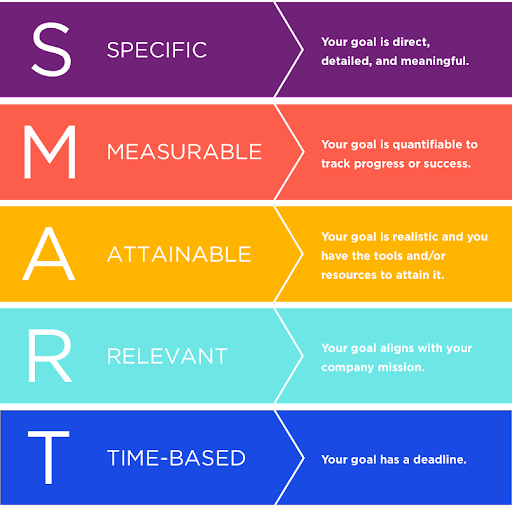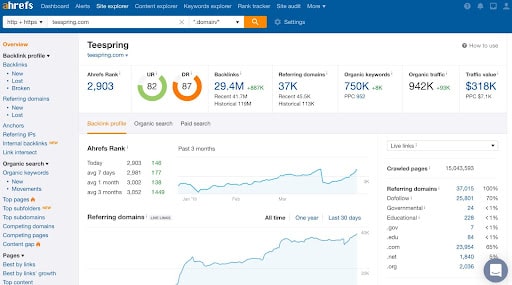SEO Campaign Management: 6 Steps to Improve Web Rankings
From pinpointing on-site technical issues, to identifying keywords and developing a content strategy, companies rely on SEO campaign management to keep their SEO team organized. Learn how to develop an effective campaign that will improve your website’s rankings and increase online visibility.
According to Brightedge Research, 68% of all trackable website traffic begins with a search engine. Additionally, most traffic comes from organic search, making SEO the best way to attract traffic, generate leads, and increase sales.
What is SEO Campaign Management?
Search engine optimization (SEO) campaign management encompasses the planning, execution, and tracking of organic SEO marketing objectives. The main goal is to achieve a number 1 position in search engine results pages (SERPS) for a variety of relevant keywords to increase the number of visitors to a website, and ultimately, goal completions (eg. good or services sold, newsletter signups, phone calls, form submissions, etc.).
SEO campaign management often includes:
- Targeting specific keywords
- Generating high-quality and share-worthy content
- Optimizing the website to improve crawlability and user accessibility
- Improving UX that leads to conversions
While this may seem easy enough, SEO is a long-term play that requires specialized knowledge and resources to be effective. As if competing against other businesses wasn’t enough, companies must also adequately navigate Google algorithm updates in order to stay at the top of results.
Because there is so much at play, SEO requires an experienced digital marketing team or SEO specialist to assess the current state of a website, create a strategy, and execute.
Need help selecting a company?
Based on your budget, timeline, and specifications we can help you build a shortlist of companies that perfectly matches your project needs. Get started by submitting your project details.
How to Plan a Successful SEO Campaign
- Set Goals
- Conduct a competitor analysis
- Audit your website
- Create a content gap analysis
- Establish SEO strategies
- Track & adjust on and off page items
Set Goals
At the beginning of a project, goal setting is important because it guides the marketing team’s focus, helps teams communicate, and streamlines decision-making.
By defining how you will measure the campaign’s success, you’ll be able to track progress and make adjustments as needed.
To be productive, goals should be clear, challenging, and easy to measure. By following the SMART goal-setting method, SEO teams become accountable for the success of their campaigns.
Standing for Specific, Measurable, Attainable, Relevant, and Time-based, SMART goal setting requires teams to think critically about what they want to accomplish in their SEO campaigns.

Source: HubSpot
Teams must determine whether their goals help their companies achieve their business objectives and are realistic in order to be effective.
SEO supports many marketing strategies, so it’s important that team leaders identify what is most important to them — whether that’s traffic,rankings, or even conversions.
Once priorities have been identified, SEO teams can determine the best way to track metrics and how often they need to report them.
Audit Your Website
SEO is affected by more than just content; it’s also impacted by:
- Accessibility
- Sitemap and crawlability
- Page speed
- Domain age and URL
- UX
- Links
- Technical SEO elements
- Mobile-friendliness
A website audit assesses how SEO-friendly a website is, making it a key step in establishing an SEO strategy. By analyzing the website’s performance, SEO teams can make technical changes that will improve the site’s rankings overall.
A website audit is no small feat; rather, SEO teams must work closely with web developers and designers to improve the website’s functionality. However, Tools such as Ahrefs can help identify performance issues and technical errors.

Source: Ahrefs
In addition to flagging all SEO issues, Ahrefs provides recommendations on how to fix them. With this information, teams can make a list of to-do items to improve their technical SEO.
Read: Best Site Audit and Crawler Tools.
Conduct a Competitor Analysis
SEO is all about outranking your competitors. By capturing their audience’s attention at the top of the SERPs, companies are able to boost sales, generate brand awareness, and even increase their market share.
Marketing teams conduct competitor analysis in order to find gaps in the market and gain a competitive edge. By understanding a competitor’s strengths and weaknesses, companies are able to improve their own strategies and carve a niche in the market.
This is particularly helpful for SEO teams because they’re able to identify what customers are looking for, what strategies are most effective, and even what keywords they should be targeting.
To do so, these teams first need to identify their competitors. If they haven’t already done so, a simple Google search on their industry can help teams understand what they’re up against. For example, a lawn mowing service can search for “Lawn care companies” to see who ranks in the first 3 slots on Google.
To determine this information, marketing teams can use Ahrefs’ Site Explorer tool to track their competitor’s ranking keywords and backlink profile.

Source: Ahrefs
Visiting a competitors’ website is also a great way to determine how to gather information. This allows teams to assess how well their site is designed, what services and products they promote, and what type of content they’re producing.
When conducting a competitor analysis, SEO teams should be asking:
- What services are my competitors providing?
- What keywords are they ranking for?
- What does their social media presence look like?
- Do they have a backlinking strategy?
This information, combined with a content gap analysis, will help marketing teams establish an effective SEO strategy.
Perform a Content Gap Analysis
A content gap analysis is the process of assessing the site’s existing content and determining where there is room to grow. By identifying what content is performing already well and what topics their competitors are ranking for, SEO teams are able to pinpoint potential topics and where they can improve their own rankings.
SEO teams should start by inventorying all the content on the site and identify URLs, keywords, and metadata that can be improved.
Helpful SEO Tools
From there, SEO teams can analyze the data to pinpoint gaps, and weaknesses. They will use this information to look at how much traffic each piece of content generates, where it ranks, and how relevant it is.
To do this, teams must look back at their SEO goals and determine if each piece of content meets their goal, needs some improvement, or should be removed.
They should also look at what keywords their competitors are ranking highly for and determine if they’re worth targeting.
Establish a Content Strategy
On-site content is valuable because it engages readers and attracts them to the website. Websites that provide interesting and informative content inevitably perform better on SERPs because that’s what users are looking for online.
An article by Georgie White on Search Engine Watch sums this up perfectly, “Ultimately, blog content on your business website is there to support the user’s journey while providing them with the most insightful information that they need during their visit. This could also support them when making a purchase, as they see you as a more trustworthy figure.”
Content also provides an opportunity to target keywords and earn links that will improve search rankings.
By outlining the content strategy in advance, SEO teams are able to post regularly while remaining flexible. This allows them to stay up to date on trends and create newsworthy content in a timely manner.
How to create an on-site content strategy:
- Identify topics that align with business objectives
- Select keywords based on their difficulty and search volume
- Analyze Google’s first SERP page to determine search intent and create content that aligns with what users expect
- Create different types of content, such as video, infographics, or downloadables.
- Develop a content calendar and post regularly
- Stay on top of news and events
- Update existing content with new data and information
- Build backlinks by forming partnerships with external sites
- Share your content on social media
Companies are able to promote their on-site content to increase traffic and boost their online visibility.
Read: “How to Create an Effective SEO Strategy in 2021”
Tracking & Adjusting
SEO isn’t a set it and forget it task. Rather, SEO teams must consistently adapt to changes in Google’s algorithm, what users are looking for, and how their competitors are performing in search.
To do so effectively, companies need to be able to track their own performance and monitor user search regularly.
Using tools such as Google Analytics or Moz, make tracking keywords, traffic, and engagement metrics fairly easy.
This data provides insight into user behavior and can help SEO and content teams generate more effective strategies in the long run. For example, SEO teams may decide to focus on a new keyword to compete with other companies in their industry or shift their content strategy to middle of funnel users.
By regularly creating an SEO report, companies can stay up to date on their website’s performance and stay ahead of the competition.
SEO Campaign Management Tips
- Stay organized by creating an SEO roadmap
- Optimize your site by focusing on technical SEO strategies
- Invest in an SEO tool such as Ahrefs, Screaming Frog, or SEMRush
- Track metrics often
- Adjust your strategy to reflect industry trends
Read: “How to Create an SEO Roadmap”
Manage Your SEO Campaign Effectively to Improve Rankings
Although SEO is time-consuming, it’s well-worth the time, energy, and resources it takes to make a campaign successful. And finding the right SEO firm is critical, because hiring the wrong one could cost your business precious time and money.
Managed well, an SEO campaign can effectively improve a website’s rankings, boost traffic, and grow online visibility.
By carefully planning and executing on their SEO strategy, SEO teams can address technical issues, compete with industry leaders, and create high-quality content that can attract users.
However, to remain competitive, they must track their performance and remain flexible so they can adjust their strategy accordingly.
Need Help Selecting a Reputable SEO Agency?
We’ve created a directory of SEO agencies to help you compare and connect with the right companies that align with your goals and budget. Use client review ratings, services offered, and client focus to create a shortlist of inbound marketing firms. If you want personalized recommendations, share your project details with us.
Additional Reading
Need help selecting a company?
Based on your budget, timeline, and specifications we can help you build a shortlist of companies that perfectly matches your project needs. Get started by submitting your project details.